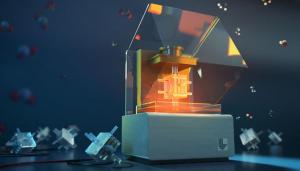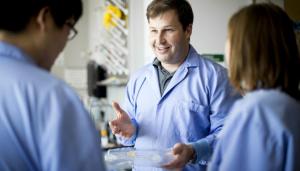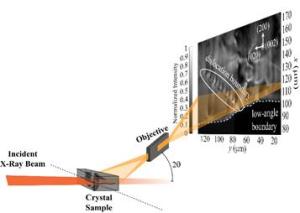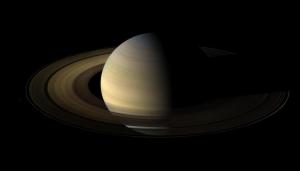LAB REPORT
Science and Technology Making Headlines
July 23, 2021


When the Starfish Prime nuclear bomb exploded, charged particles from the blast collided with molecules in Earth’s atmosphere, creating an artificial aurora that could be seen as far away as New Zealand.
Why the U.S. once set off a nuclear bomb in space
It was pitch black when Greg Spriggs’ father brought his family to the highest point on Midway Atoll on July 8, 1962. That night on another atoll a thousand miles away, the U.S. military was scheduled to launch a rocket into space to test a fusion bomb. “He was trying to figure out which direction to look,” recalled Spriggs, a weapons scientist at Lawrence Livermore National Laboratory. “He thought there was going to be this little flicker, so he wanted to make sure everybody was going to see it.”
It turned out that the blast — a 1.4 megaton bomb, 500 times as powerful as the one that fell on Hiroshima — was not subtle.
Starfish Prime, detonated 250 miles above the Johnston Atoll in the Pacific Ocean, was one of the last and biggest high-altitude nuclear tests. A resulting electromagnetic pulse caused blackouts in Hawaii, but the test allowed scientists to study how radiation affected Earth’s upper atmosphere and radiation belts. The following year, the U.S., the U.K. and the U.S.S.R. signed the Limited Nuclear Test Ban Treaty, and outer space has been H-bomb free for almost 60 years.
But the results of Starfish Prime serve as a warning of what might happen if Earth’s magnetic field gets blasted again with high doses of radiation, either from another nuke or from natural sources such as the sun.
The memory of that day stuck with Spriggs, who works preserving and analyzing archival nuclear test footage. “I told my dad years later, ‘You know, if I knew I was going to become a nuclear weapon physicist, I would have paid more attention,’” he said.


Lawrence Livermore researchers and their collaborators have demonstrated that 3D printing can be used to rapidly enhance electrochemical reactors for CO2 conversion, increasing efficiency while broadening fundamental understanding of the reactions. Illustration by Veronica Chen/LLNL.
Turning CO2 into energy
Lawrence Livermore National Laboratory (LLNL) scientists and their collaborators are leveraging the power of 3D printing to improve the performance of electrochemical reactors used to convert carbon dioxide (CO2) to useful energy sources, chemicals and material feedstocks.
Working under a cooperative research and development agreement (CRADA) with Stanford University and oil and gas company Total American Services, LLNL researchers and their team have, for the first time, demonstrated that 3D printing can be used to rapidly enhance electrochemical reactors for CO2 conversion, increasing efficiency while broadening fundamental understanding of the reactions.
The research team proved that through 3D printing reactor components, they could produce higher yields of desirable fuels and feedstocks such as ethanol and ethylene through “vapor-fed” electrochemical systems and accelerate the process of building state-of-the-art reactors from weeks to days or hours.

Using flexible multielectrode arrays designed and developed at LLNL, a team of researchers at UCSF, led by professor Loren Frank (center), was able to continuously measure the neural activity of nearly 400 single neurons over a period of at least five months from multiple regions of rodent brains. Photo credit Noah Berger/UCSF.
Picking the brain
Flexible electrodes offer an alternative approach to silicon probes for high-density brain recordings.
Pliable probes, built on a polymer substrate, are more difficult to insert than their silicon counterparts — it’s like piercing cloth with thread rather than a needle — but they cause little damage to surrounding tissue. And because they move with the brain, they stay anchored to the same cells day after day.
Lawrence Livermore is working with UC Berkeley and Lawrence Berkeley on a flexible-electrode project.
UC Berkeley professor Loren Frank and collaborators used the devices to search for signs of coordinated activity across the brain at the single-cell level. They implanted 16 of an earlier iteration of the probe into a rat’s brain and found changes in activity in multiple brain regions that coincided with sharp-wave ripples in the hippocampus, synchronous waves of activity tied to memory and planning.

Dark-field X-ray microscopy views defects deep inside millimeter-thick crystals by capturing images of the X-ray diffracted beam.
Watching defects as they move
A team of international researchers has used dark-field X-ray microscopy to track how defects deep within millimeter-thick crystals move collectively.
Professor Leora Dresselhaus-Marais, a former Lawrence Livermore National Laboratory researcher now at Materials Science and Engineering, Stanford University, and colleagues harnessed the method to show defects move exotically just at the edge of melting temperatures.
“This work presents a large step forward for materials science, physics and related fields, as it offers a unique new way to view the ‘intermediate scales’ that connect microscopic defects to the bulk properties they cause,” she says.
Long-range interactions between defects are known to play a key role in how materials deform or melt, but researchers have lacked the tools to connect these dynamics to the macroscopic properties.


An international research team, including scientists from Lawrence Livermore, have validated a nearly 40-year-old prediction and experimentally shown that helium rain is possible inside planets such as Jupiter and Saturn (pictured). Image courtesy of NASA/JPL/Space Science Institute.
Putting the squeeze on super Earths
About 25 years ago astronomers kicked off the “exoplanet revolution” with the discovery of the first alien world orbiting another sunlike star. As the pace of discovery quickened and new data came pouring in, it became clear that the cosmos is awash in planets.
Scientists are now creating high temperatures and pressures on Earth to delve into conditions found in these planets.
Lawrence Livermore researchers and collaborators are using lasers at the Laboratory for Laser Energetics of the University of Rochester and LLNL’s National Ignition Facility to study the phenomenon of “helium rain” in Saturn and Jupiter. Deep within gas-giant worlds, almost unfathomable pressure squeezes hydrogen and helium alike into metallic fluids more akin to mercury. These fluids mix well together in outer portions of such a planet’s deep interior, but in the depths, the tenets of atomic theory predict they will “unmix” like water and oil.





